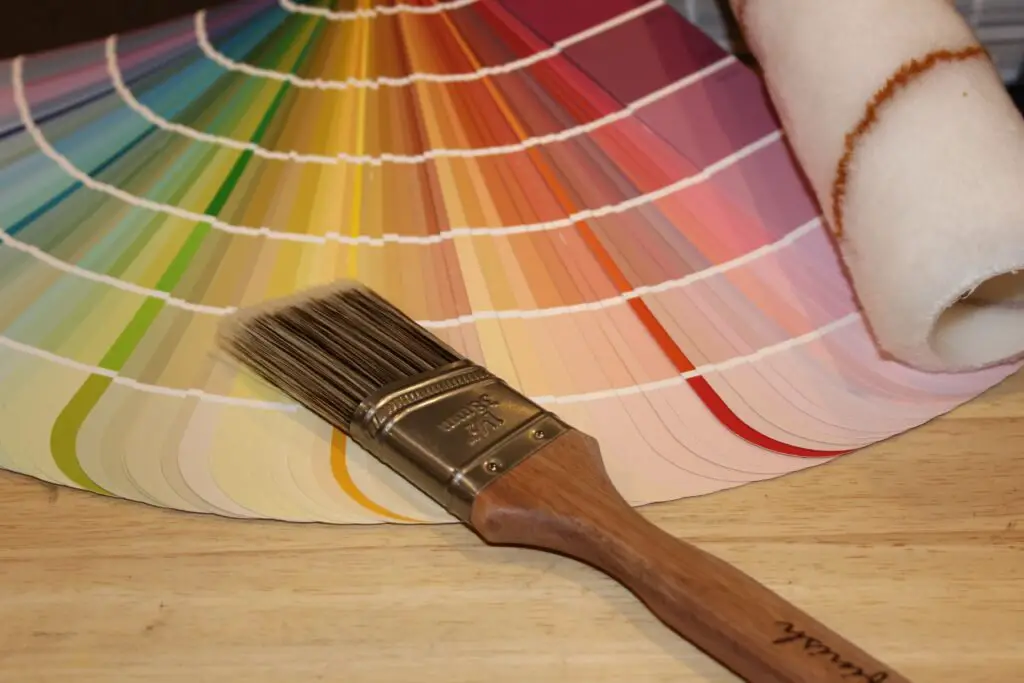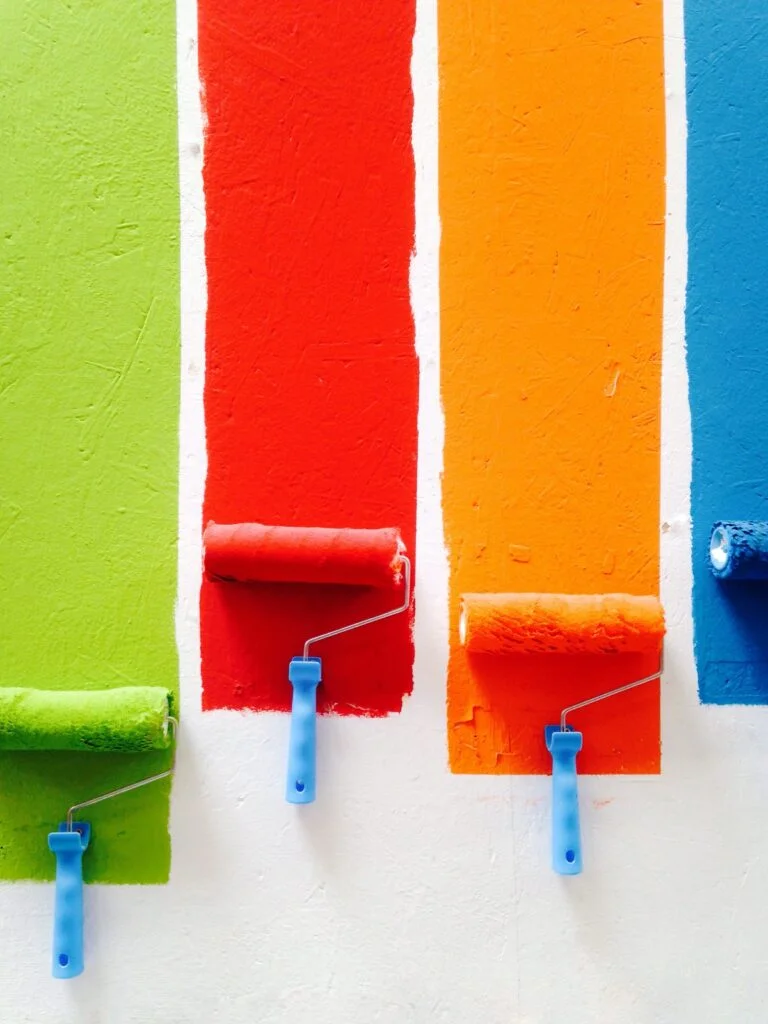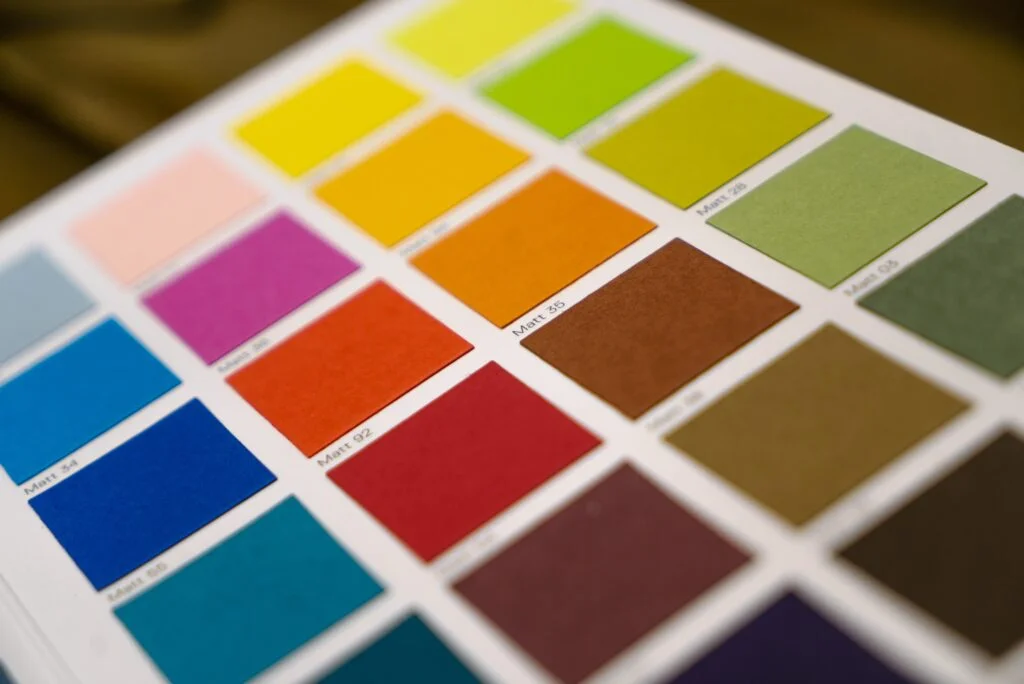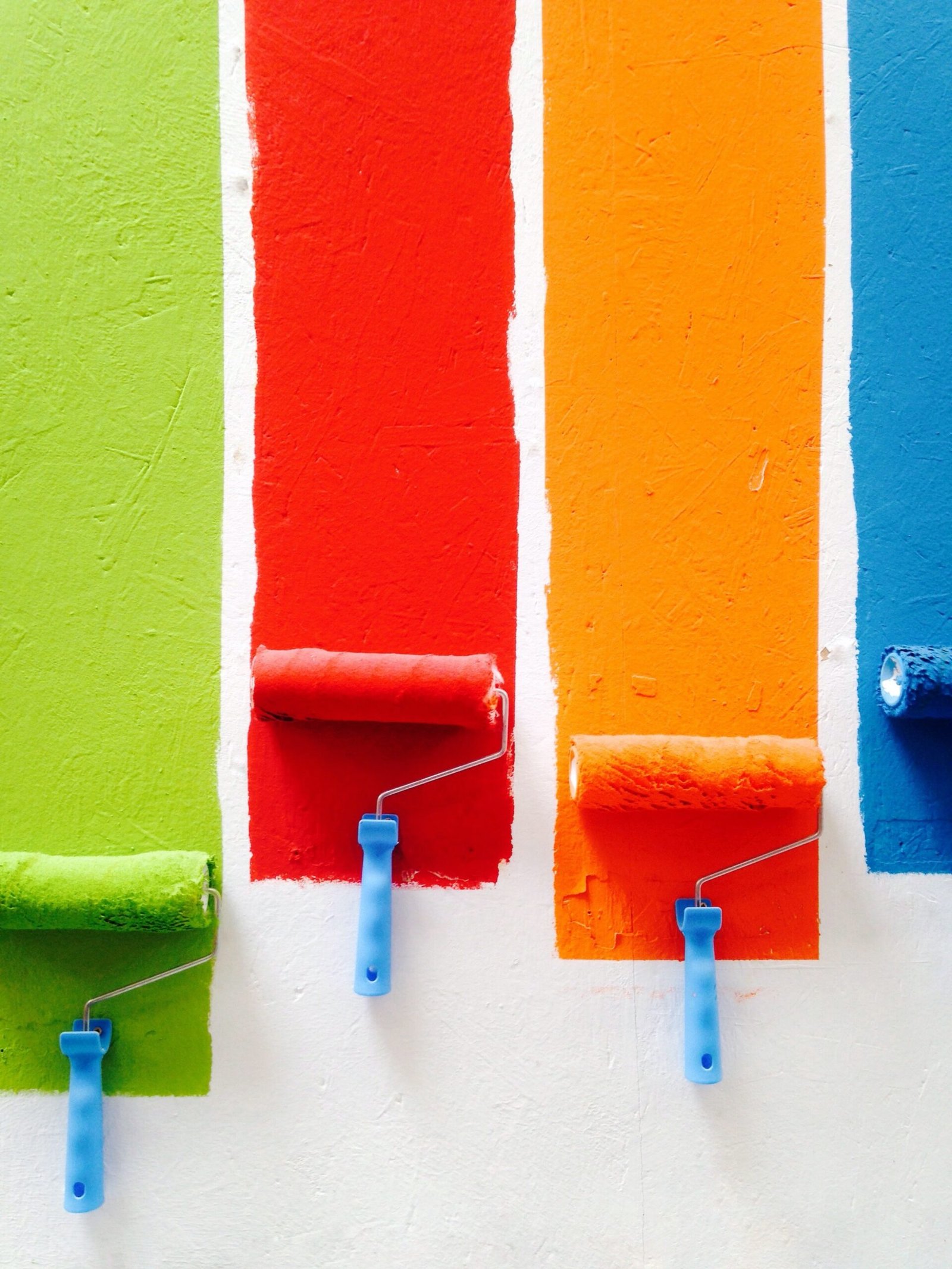So, you’re thinking about giving your room a fresh coat of paint, eh? Well, before you grab that paintbrush and go wild, let’s take a moment to consider something crucial – what color should you absolutely avoid painting a room? We all know that color can have a tremendous impact on our mood and overall ambiance, and choosing the wrong one could spell disaster. In this article, we’ll explore the color that experts warn against using in your room and uncover the fascinating reasons behind it. Get ready to discover the power of paint and the one color you’ll want to steer clear of.
What Color Should You Not Paint A Room?
Table of Contents
Dark Colors
When it comes to painting a room, dark colors can have a significant impact on the overall atmosphere and mood. While they can create a sense of elegance and sophistication, it’s important to consider the size and lighting in the space before opting for these colors.
Black
Black, often associated with power and mystery, can be a bold choice for a room. However, using black as the primary color can make the space feel smaller and darker than it actually is. It absorbs light rather than reflecting it, creating a cave-like effect. If you still wish to incorporate black, consider using it in small accent pieces or as an accent wall to add depth and drama to the room.
Navy Blue
Navy blue, reminiscent of the night sky, is a popular choice for creating a serene and calming ambiance. However, applying this color on all four walls can make the space feel heavy and gloomy, especially in rooms with limited natural light. To avoid this, consider using navy blue as an accent color instead. Pair it with lighter hues to create a balanced and visually appealing environment.
Dark Brown
Dark brown, often associated with warmth and coziness, can add a touch of luxury to a room. However, like other dark colors, it can make a space feel smaller and less inviting. To prevent the room from becoming too overwhelming, use dark brown in combination with lighter shades. Consider using it as an accent color for furniture or trim, rather than as the dominant color on the walls.
Bright and Neon Colors
Bright and neon colors can inject energy and vibrancy into a room, but it’s essential to be mindful of how they might affect the overall ambiance and the visual impact they can have on the space.
Neon Yellow
Neon yellow is a bold and attention-grabbing color that can create a playful and energetic atmosphere. However, it’s important to use this color in moderation and with caution. Painting an entire room in neon yellow can result in an overwhelming and overly stimulating environment. Instead, consider using this vibrant hue as an accent color or in small doses to emphasize specific areas or objects.
Hot Pink
Hot pink is a color that radiates confidence and excitement. While it can be a fun choice for a young child’s room or a playful space, it may not be suitable for rooms where relaxation and tranquility are desired. Too much hot pink can be visually fatiguing and may not promote a calming environment. You can still incorporate hot pink by using it as an accent color or in accessories to add pops of personality without overwhelming the entire room.
Electric Blue
Electric blue, an intense and electrifying color, can infuse a room with energy and vitality. However, it is crucial to use electric blue in moderation to prevent it from overpowering the space. Painting all the walls in electric blue can create a visually overwhelming environment that might not be conducive to relaxation or concentration. Consider using electric blue as a feature wall or in accent pieces to maintain a balanced and visually pleasing aesthetic.

Oversaturated Colors
Oversaturated colors, characterized by their intense and vivid nature, can create a striking visual impact. However, using them excessively can lead to sensory overload and may not be ideal for all spaces.
Bright Red
Bright red, a color associated with power and passion, can create a strong focal point in a room. However, painting all the walls in bright red can make the space feel confined and intense. This color has also been known to increase heart rate and stimulate appetite, which may not be desired effects in certain areas of the home. If you still want to incorporate bright red, consider using it as an accent color or in smaller doses to evoke energy without overwhelming the space.
Deep Purple
Deep purple, a color that exudes luxury and richness, can add depth and sophistication to a room. However, using too much deep purple can make the space feel heavy and oppressive, particularly in rooms with limited natural light. Incorporate deep purple in a more restrained manner, such as through textiles, upholstery, or accent pieces, to achieve a balanced and visually appealing effect.
Vibrant Orange
Vibrant orange is a bold and energetic color that can inject warmth and vivacity into a room. While it can be tempting to paint the walls in vibrant orange, doing so can create an intense and visually stimulating environment. Instead, consider using vibrant orange as an accent color, such as in accessories or artwork, to add pops of energy and interest to the space without overpowering it.
Cool Colors
Cool colors, known for their calming and soothing properties, can create a serene and tranquil atmosphere. However, it’s essential to consider the specific shade and context of these colors before using them in a room.
Turquoise
Turquoise, a blend of blue and green, can evoke feelings of serenity and relaxation. However, using a highly saturated or bright turquoise can make a room feel cold and sterile. To maintain a balanced environment, opt for softer or muted shades of turquoise. Consider using it as an accent color or in combination with warmer hues to create a harmonious and visually pleasing space.
Cold Gray
Cold gray, often associated with modern and minimalist aesthetics, can create a sleek and sophisticated look. However, using too much cold gray can make a room feel uninviting and devoid of warmth. To prevent this, consider incorporating warmer undertones into the gray paint or using it as a backdrop for other colors. Balance the coolness of gray with warm accents, such as wood tones or textiles, to create a cozy and welcoming atmosphere.
Frosty Green
Frosty green, a pale and cool shade, can bring a touch of nature into a room. However, using frosty green without careful consideration of lighting and other design elements can result in a space that feels cold and unwelcoming. To make frosty green work, ensure that there is adequate natural or artificial light to prevent the room from feeling too dim. Consider pairing frosty green with warmer neutrals or incorporating pops of contrasting colors to create visual interest and warmth.

Warm Colors
Warm colors are known for their ability to create a cozy and inviting atmosphere. However, it’s important to strike a balance when using these colors to avoid overwhelming the space with too much intensity and saturation.
Fiery Red
Fiery red, a color that ignites passion and excitement, can create a bold statement in a room. However, painting the walls in fiery red can be visually overwhelming and may not promote relaxation or comfort. To incorporate fiery red, consider using it as an accent color or in accessories to add pops of energy and personality without overpowering the entire space.
Intense Yellow
Intense yellow, reminiscent of sunshine and happiness, can bring warmth and vibrancy to a room. However, using too much intense yellow can create a visually overpowering environment and may cause feelings of agitation. To make intense yellow work, consider using it as an accent color or in areas where it can be tempered by other hues. Combining intense yellow with neutrals or cooler shades can help create a harmonious and balanced space.
Blazing Orange
Blazing orange, a color that radiates warmth and enthusiasm, can create a lively and welcoming atmosphere. However, using too much blazing orange can result in an overpowering and visually fatiguing space. To incorporate blazing orange effectively, consider using it as an accent color or in smaller doses. Pair it with neutral or cooler tones to create a balanced and visually pleasing environment that still evokes the desired sense of energy and vitality.
White
White, often associated with purity, simplicity, and cleanliness, is a versatile and timeless color choice for any room. Its neutrality allows for endless possibilities in terms of design and decor.
Pure White
Pure white, a color that reflects all wavelengths of light, can create a sense of spaciousness and purity in a room. It serves as a blank canvas, allowing other colors and elements to truly shine. Pure white walls can make a space feel airy and bright, providing a clean backdrop for furniture and artwork. However, it’s important to consider the quality and intensity of natural and artificial light in the room, as pure white can amplify existing lighting conditions.
Off-White
Off-white, a slightly tinted version of white, can add warmth and depth to a room while maintaining a clean and timeless aesthetic. Off-white hues, such as cream or ivory, have a subtle warmth that can create a cozy and inviting atmosphere. Additionally, off-white tones can complement a variety of other colors, making them versatile options for any room. It’s essential to consider the undertones of off-white paint to ensure they align with the desired ambiance and decor scheme.

Muted and Dull Colors
Muted and dull colors, often characterized by their softened or desaturated appearance, can create a calm and sophisticated atmosphere. However, it’s important to be cautious with these colors, as they can sometimes result in a lack of visual interest.
Beige
Beige, a neutral color that carries warmth, can create a cozy and inviting environment. However, using too much beige can make a room feel dull and uninspiring. To prevent this, consider incorporating different shades and textures of beige to add depth and visual interest. Pair beige with bolder accent colors or patterns to create a balanced and visually appealing space.
Olive Green
Olive green, a muted and earthy tone, can evoke a sense of tranquility and connection to nature. However, using too much olive green can create a space that feels drab and uninviting. To make olive green work, consider combining it with lighter shades or incorporating pops of contrasting colors. Use olive green as an accent color or in combination with other muted tones to create a space that feels calming and visually pleasing.
Dusty Pink
Dusty pink, a delicate and understated hue, can bring a touch of femininity and sophistication to a room. However, using too much dusty pink can result in a space that feels monotonous or overly sweet. To prevent this, consider using dusty pink as an accent color or in combination with other soft neutrals. Use it to highlight specific areas or as a complement to bolder hues to create a well-balanced and visually pleasing environment.
Conflicting Colors
Conflicting colors refer to combinations that create visual disharmony or discordance. While experimenting with contrasting colors can be exciting, it’s important to be mindful of how these combinations might affect the overall aesthetic of the room.
Clashing Combinations
Clashing combinations occur when colors with opposing temperature or undertones are paired together without consideration for their visual compatibility. For example, pairing cool-toned blues with warm-toned oranges or reds can create visual disharmony. While some may appreciate the tension and energy that clashing combinations bring, it’s important to consider the overall mood and ambiance desired in the room. To create a visually pleasing space, it’s recommended to either opt for complementary or harmonious color schemes.
Confusing Contrasts
Confusing contrasts occur when color combinations result in an unclear focal point or visual disorientation. For example, using high-contrast colors, such as black and white or bright red and lime green, throughout a room can create visual chaos. While these combinations can be bold and eye-catching, they might not create a harmonious or comfortable environment. To avoid confusing contrasts, consider using contrasting colors strategically, such as in specific areas or as accent pieces, to create a balanced and visually appealing space.

Highly Personal Colors
Highly personal colors refer to those that have specific associations or carry individual preferences. These colors may have a significant impact on the room’s ambiance, but it’s important to consider how they align with personal taste and the overall design vision.
Distinctive Preferences
Distinctive preferences refer to color choices that are unique to individuals. These colors hold personal significance or evoke strong emotions and memories. While highly personal colors can create a deeply personal and meaningful space, it’s essential to consider how they might impact the room’s versatility and appeal to others. To balance personal preferences, consider incorporating them as accent colors or through accessories to maintain flexibility in the room’s design.
Rarity of Appeal
Colors that have a rarity of appeal are those that may not have widespread popularity or that may be subject to changing trends. While it can be tempting to incorporate these unique colors into a room, it’s important to consider their impact on the overall aesthetic and long-term enjoyment of the space. To incorporate rare or unconventional colors effectively, consider using them in smaller doses or as accents to ensure the room remains visually appealing and versatile.
Superstitious and Cultural Associations
Superstitious and cultural associations can significantly influence color choices in different contexts. These associations tie specific colors to beliefs, taboos, or cultural symbolism, impacting how they are perceived and used in interior design.
Unfavorable Symbolism
Certain colors may carry unfavorable symbolism or cultural connotations that make them less desirable in certain contexts. For example, in some cultures, white symbolizes mourning and is reserved for funerals. It’s important to be aware of these potential associations when selecting colors for a room. Understand the cultural or superstitious significance of specific colors to ensure they align with the desired meaning or symbolism in the space.
Religious Beliefs
Religious beliefs can also influence color choices, particularly in spaces such as prayer rooms or sacred spaces. For example, in Hinduism, white is associated with purity and is often used in religious rituals. Understanding the religious significance of colors is crucial to ensure that the room supports the intended purpose and remains respectful of religious beliefs.
In conclusion, when choosing colors for any room, it’s essential to consider the impact they will have on the overall atmosphere and mood. Each color carries its own characteristics and associations, making it crucial to use them thoughtfully and in harmony with other design elements in the space. By understanding the strengths and potential drawbacks of different colors, you can create a room that reflects your personal style while also promoting a welcoming and visually pleasing environment.


